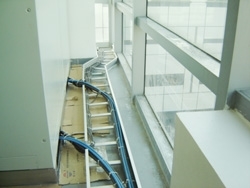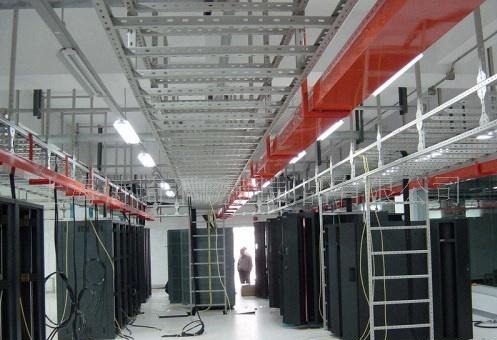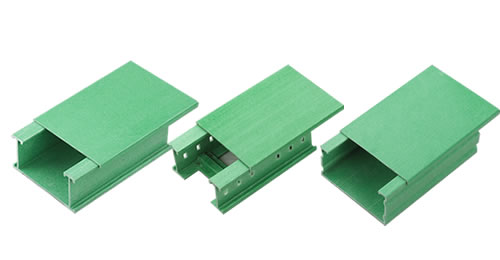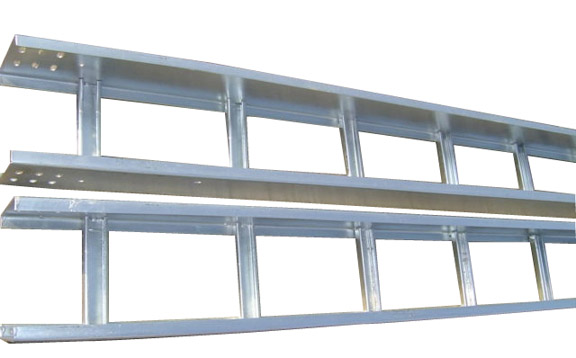电缆与桥架的 “适配密码”:弯曲半径与尺寸的微妙关系
在电力系统的庞大网络中,电缆宛如输送电流的 “血管”,而桥架则是支撑这些 “血管” 的 “骨架”。其中,电缆弯曲半径与桥架尺寸之间的关系,就如同隐藏着的 “适配密码”,深刻影响着电力传输的稳定性与性,是电气安装工程中不可忽视的关键环节。
In the vast network of the power system, cables are like "blood vessels" that transport current, while cable trays are the "skeleton" that supports these "blood vessels". The relationship between the bending radius of cables and the size of cable trays is like a hidden "adaptation password", which deeply affects the stability and safety of power transmission and is a key link that cannot be ignored in electrical installation engineering.
电缆弯曲半径,从角度讲,是指将弯曲的电缆近似看作一段圆弧时,该圆弧所在圆的半径。它绝非一个随意的数值,而是由电缆的材料、结构以及性能等多种因素共同决定。不同类型的电缆,其小弯曲半径有着明确且严格的规定。例如,无铠装的橡皮绝缘电力电缆,小弯曲半径不应低于电缆外径的 10 倍;有钢铠护套的橡皮绝缘电力电缆,这一数值则提升 20 倍。交联聚氯乙烯绝缘电力电缆,无铠装时小弯曲半径为电缆外径的 15 倍,铠装后有所变化 。这些标准的制定并非凭空而来,而是基于大量实验与实践经验,旨在确保电缆在弯曲过程中,内部结构不受损害,从而保障电力传输的稳定。若电缆弯曲半径过小,会对电缆内部造成诸多不良影响。从导体层面看,电缆导体通常由多根单芯导线绞合而成,过度弯曲会使导体松散、突起,进而影响导体外层半导电层和绝缘层的性能。绝缘层方面,当电缆弯曲时,弯曲处的绝缘会发生拉伸变形,一旦超过小允许弯曲半径,绝缘就可能受损,导致绝缘性能下降,增加漏电风险,严重时甚引发短路故障,威胁整个电力系统的运行。
The bending radius of a cable, from a professional perspective, refers to the radius of the circle where the curved cable is approximately considered as a segment of a circular arc. It is not an arbitrary value, but is determined by various factors such as the material, structure, and performance of the cable. There are clear and strict regulations on the minimum bending radius for different types of cables. For example, for unarmored rubber insulated power cables, the minimum bending radius should not be less than 10 times the outer diameter of the cable; For rubber insulated power cables with steel armor sheaths, this value increases by 20 times. Cross linked polyvinyl chloride insulated power cables have a minimum bending radius of 15 times the outer diameter of the cable when not armored, which may change after being armored. The formulation of these standards is not out of thin air, but based on a large amount of experimental and practical experience, aiming to ensure that the internal structure of cables is not damaged during the bending process, thereby ensuring the stability of power transmission. If the bending radius of the cable is too small, it will cause many adverse effects on the inside of the cable. From the perspective of conductors, cable conductors are usually made up of multiple single core wires twisted together. Excessive bending can cause the conductor to become loose and protruding, thereby affecting the performance of the outer layer of the conductor's semiconducting and insulating layers. In terms of insulation layer, when the cable is bent, the insulation at the bend will undergo tensile deformation. Once the minimum allowable bending radius is exceeded, the insulation may be damaged, leading to a decrease in insulation performance, an increase in leakage risk, and even causing short circuit faults in severe cases, threatening the safe operation of the entire power system.
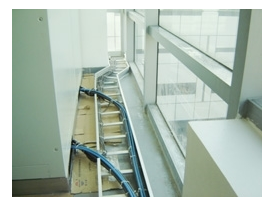
桥架作为电缆敷设的载体,其尺寸的设计需要充分考虑电缆弯曲半径的要求。桥架转弯处的弯曲半径,必须不小于桥架内电缆小允许弯曲半径的值。在实际应用中,若桥架尺寸与电缆弯曲半径不匹配,会引发一系列问题。当桥架尺寸过小,无法满足电缆弯曲半径需求时,电缆在桥架内难以顺畅弯曲,可能出现电缆相互挤压、扭曲的情况。这不仅增加了电缆安装的难度,还可能在安装过程中对电缆造成机械损伤,缩短电缆使用寿命。而且,不合理的弯曲还会影响电缆的电气性能,导致电阻增大、信号传输不稳定等问题。相反,若桥架尺寸过大,虽然能满足电缆弯曲要求,但会造成空间浪费,增加材料成本与安装难度,同时也可能影响整个建筑空间的布局与美观。
As a carrier for cable laying, the size design of cable trays needs to fully consider the requirements of cable bending radius. The bending radius at the turning point of the bridge must not be less than the maximum allowable bending radius of the cables inside the bridge. In practical applications, if the size of the cable tray does not match the bending radius of the cable, it can cause a series of problems. When the size of the cable tray is too small to meet the bending radius requirements of the cable, it is difficult for the cable to bend smoothly inside the tray, and there may be situations where the cables are squeezed and twisted against each other. This not only increases the difficulty of cable installation, but may also cause mechanical damage to the cable during installation, shortening its service life. Moreover, unreasonable bending can also affect the electrical performance of cables, leading to increased resistance and unstable signal transmission. On the contrary, if the size of the cable tray is too large, although it can meet the requirements of cable bending, it will cause space waste, increase material costs and installation difficulties, and may also affect the layout and aesthetics of the entire building space.
那么,如何精准匹配电缆弯曲半径与桥架尺寸呢?在工程设计阶段,要准确掌握电缆的类型、规格以及数量等信息,依据相关标准确定每根电缆的小弯曲半径。对于多根电缆同时敷设的情况,要综合考虑不同电缆的弯曲半径要求,合理规划电缆在桥架内的排列方式。一般而言,粗电缆应布置在桥架转弯处的外侧,细电缆布置在内侧,这样能在满足电缆弯曲半径的前提下,限度地利用桥架空间。然后,根据电缆的弯曲半径和排列方式,计算出桥架所需的小宽度与高度。以常见的梯式桥架为例,假设桥架内要敷设多根交联聚氯乙烯绝缘电力电缆,已知其中外径电缆的小弯曲半径为 15D(D 为电缆外径),若有多根电缆单层敷设,且考虑一定的安装间隙,就可通过公式计算出桥架的小宽度。实际选择桥架尺寸时,还需适当放大计算结果,预留一定的余量,以应对可能出现的安装误差、后期电缆维护或增加电缆等情况。同时,桥架的高度也需根据电缆的层数以及散热需求等因素综合确定,确保电缆在桥架内有足够的空间,既能满足弯曲要求,又能保证良好的散热条件,避免因散热不良导致电缆温度过高,影响电力传输性能。
So, how to accurately match the bending radius of the cable with the size of the cable tray? In the engineering design phase, the first step is to accurately grasp the type, specifications, and quantity of cables, and determine the minimum bending radius of each cable based on relevant standards. For the case of multiple cables being laid simultaneously, it is necessary to comprehensively consider the bending radius requirements of different cables and plan the arrangement of cables in the cable tray reasonably. Generally speaking, thick cables should be arranged on the outer side of the bridge bend, while thin cables should be arranged on the inner side, so as to maximize the use of bridge space while meeting the cable bending radius. Then, based on the bending radius and arrangement of the cables, calculate the minimum width and height required for the cable tray. Taking the common ladder style cable tray as an example, assuming that multiple cross-linked polyvinyl chloride insulated power cables need to be laid inside the tray, the minimum bending radius of the largest outer diameter cable is known to be 15D (D is the outer diameter of the cable). If multiple cables are laid in a single layer and a certain installation gap is considered, the minimum width of the tray can be calculated using a formula. When selecting the actual size of the cable tray, it is necessary to appropriately enlarge the calculation results and reserve a certain margin to cope with possible installation errors, later cable maintenance, or cable additions. At the same time, the height of the cable tray needs to be determined comprehensively based on factors such as the number of cable layers and heat dissipation requirements, to ensure that there is sufficient space for the cables inside the tray, which can meet the bending requirements and ensure good heat dissipation conditions, and avoid excessive cable temperature caused by poor heat dissipation, affecting power transmission performance.
本文由济南电缆桥架友情奉献.更多有关的知识请点击 http://www.sdhangfeng.com 真诚的态度.为您提供为的服务.更多有关的知识我们将会陆续向大家奉献.敬请期待.
This article is a friendly contribution from Jinan Cable Bridge For more related knowledge, please click http://www.sdhangfeng.com Sincere attitude To provide you with comprehensive services We will gradually contribute more relevant knowledge to everyone Coming soon.山东电缆桥架



